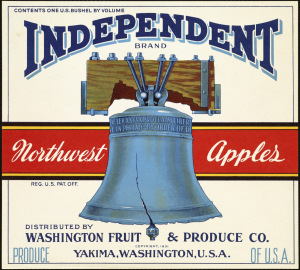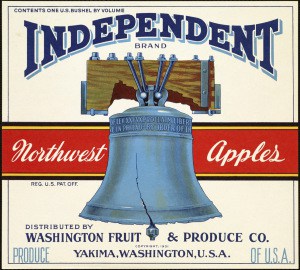Originally published in the Scholarly Kitchen on April 30, 2015
 Lately, it seems that I’m always running an informal poll! Last year, when a staff member at the International Association of STM publishers asked me what I thought were the most important topics STM Societies should have on their publications committee agendas, I informally asked about a dozen folks and got some great feedback. A few of those responses were explored further in a session during STM Society Day, the pre-meeting program for the 2015 STM Annual US Conference in Washington DC.
Lately, it seems that I’m always running an informal poll! Last year, when a staff member at the International Association of STM publishers asked me what I thought were the most important topics STM Societies should have on their publications committee agendas, I informally asked about a dozen folks and got some great feedback. A few of those responses were explored further in a session during STM Society Day, the pre-meeting program for the 2015 STM Annual US Conference in Washington DC.
But, one question that came up was not explored at the STM session so we decided to ask the Chefs: What is editorial independence and how does it impact publishing?
On the surface this feels like such a straight-forward question one might wonder why we would even cover it. However, this question is filled with nuance. If expectations are not clearly set, misunderstanding can cause angst, poor working relationships, and even legal action. Here’s what the Chefs had to say:
Joe Esposito: Editorial independence is sometimes called by the more colorful name of the “church-and-state” principle. Editors rule the church, the state is run by the business types. This is an important principle in advertising-supported media where a publication may be pressured to go easy on an advertiser, but as anyone can see, if you do that once, you can’t do it a second time, as it destroys the brand.
In the world that Kitchen readers inhabit, the idea of business people interfering with editorial decisions is so outrageous that the situation almost never comes up. I can’t imagine it myself.
Oddly, professional societies in my experience think this is a real problem. Here is the scenario: a society is considering a publishing services deal with Elsevier, Wiley, whomever. The society, having heard from the librarians at their institutions that the people who work for commercial publishers are Certifiably Bad Guys, is fearful that the large publishers will try to take over editorial control. Of course, the last thing a publisher like this wants to do is to muck around with editorial, as that is where the costs and headaches are.
Editorial independence is simply part of the DNA of the industry.
Ann Michael: Editorial independence at its core means that a publisher may never tell an Editor in Chief (EIC) what he or she can or cannot publish in the journal. The EIC is the arbiter of what content is suitable for the journal, based on its mission and goals. For article accept/reject decisions this is relatively straightforward.
The publisher also has a remit. The publisher is charged with the financial health of the journal. Sales and licensing, marketing, branding, distribution, and new product development are often the purview of the publisher. But the lines are never crystal clear. For example, new product development often requires the collaboration of publishing and editorial to define a product or service that is both viable in the market and valuable to the user community.
Other grey areas are related to the display and repurposing of content, whether in print or digital form. Can an advertisement related to a drug mentioned in a scholarly research article be presented adjacent to that article? The answer in medicine is usually a resounding NO! There can also be valid discussions around repurposing sponsored collections of articles. For some of these issues, societies and commercial publishers develop policies and guidelines to help address common points (e.g., many medical journals have policies on “Advertising adjacency”).
Many organizations help to ensure editorial independence through their governance structure. In cases, for example, where the EIC reports to a publisher or even a Society CEO, it is very common that he or she also has a direct line of communication and escalation to the Board of Directors and that the BOD may take on decisions where editorial independence is in play.
But it’s important to remember that there is always the potential for a conflict where the mission of the publisher (to sustain the journal financially) and the mission of the editor (to define the journal editorially) intersect. Most of these conflicts have nothing to do with editorial independence. The look and feel of the journal online (design), staffing of the editorial office, or whether the journal has a mobile app are all places where editorial input is needed, but they do not impact editorial independence.
The bottom line is that a truly successful journal requires a collaborative, trusting partnership between editorial and publishing. It takes a healthy and interactive team to create a vibrant and healthy publication!
Alice Meadows: The Scholarly Kitchen itself is a great example of editorial independence, in my opinion. It was founded by and is still published under the auspices of the Society for Scholarly Publishing – to help fulfill the society’s mission of advancing scholarly publishing and communication – but is completely editorially independent of the society. This means that all the Chefs are free to publish posts that reflect their own opinions, which are not necessarily those of SSP, and which SSP has no say in. That doesn’t mean there no editorial control, just that the control is not directly in SSP’s hands. Instead they (and we!) rely on our editor-in-chief, David Crotty, who’s appointed by the Board but operates independently from them, to vet the content – which, in fact, he does with a very light hand. This enables the Kitchen to reflect a wide diversity of voices and opinions – exactly the reason why we enjoy writing for it and you (hopefully) enjoy reading it!
Looking beyond the Kitchen, this same model of editorial independence – the separation of what is published in a journal from the organization that owns that journal – helps ensure that article selection is based on the merits of the article and its suitability for inclusion in the journal. Not, for example, based on whether their organization is a paid advertiser or sponsor of the journal, or whether the owner is a supporter (or detractor) of their work.
Karin Wulf: For humanities journals, most of which are small operations, single journals published by a society often through the auspices of a university press, the integrity of editorial independence is critical. This goes beyond the publishing “separation of church and state,” though of course that’s important, too. The Editor should be free from pressure by the society or the press to accept material from an academically influential author or a potential donor.
The Editor’s ability to make independent assessments about submissions is another significant aspect. Editorial board members have a pretty wide range of responsibility; some are tasked with reviewing manuscripts and creating special issues of the journal, while others oversee the work of the journal without getting involved in routine operations. Some larger journals have Associate or Assistant Editors who work as a committee with the Editor. In any case, the Editor’s ability to respond to manuscript reviews without being held accountable either to a democracy of the reviewers or to the inappropriate influence of the board is key. For example, if an Editor receives five reader reports, and four are positive but general and one is negative but detailed, lengthy and knowledgeable about the topic, the Editor has to be able to give greater weight to the one that s/he finds persuasive.
But the integrity of independence cuts both ways. If the scholarly community doesn’t respect the Editor’s integrity, they won’t patronize the journal either by submitting their work or by reading and citing the publication.
Angela Cochran: Society journals are an arm of that society and often carry some pronouncement that the content of the journals should align with the goals of the society. This should not mean that the journal editor is required to publish content in support of the society. It also doesn’t mean that the editor should decline any manuscripts on the basis of it being critical of the society or in opposition to society talking points. In fact, societies should allow their journals to be the platform for debate when it comes to the profession.
Societies for which membership is inclusive of academics and practitioners may see more friction when it comes to editorial independence. Practitioners who are not engaged in academia and research in general don’t always understand that articles published in the journal may be theoretical or that there is a self-correcting nature in scholarly publishing. Questioning common practices and theorizing on better ways to meet the end goals is the entire point!
In my experience, there are times when a practitioner within the society calls into question an editorial decision on a paper they see as utterly ridiculous. In these cases, editors need to explain the peer review process and invite the practitioner to respond to the paper in an appropriate way (authoring a discussion, a forum on the topic, a letter to the editor, or their own paper).
While these incidents are not a regular occurrence, they can be very emotional. I am happy to say that is it also my experience that the leadership within societies typically understand the importance of editorial independence and will back the editor on his or her decisions.
Societies certainly want to protect their brand and reputation. For many societies, having strong debate and showcasing opposing viewpoints in the journals provides balance and shows that the organization is open to discourse.
_____________________
As usual, we would really like to hear from you. What’s your opinion or experience? How does editorial independence impact your publications?
(…and if you’re one of the ones that has answered any of my informal polls – thank you!)

